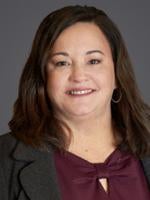On January 9, 2024, the California Department of Public Health (CDPH) issued an order addressing COVID-19 disease control and prevention. The new order is for non-healthcare settings, takes effect immediately, and is accompanied by question-and-answer materials.
Quick Hits
- On January 9, 2024, CDPH issued a new State Public Health Officer Order for COVID-19 Disease Control and Prevention with accompanying question-and-answer guidance.
- CDPH’s order recognizes that there are “reduced impacts from COVID-19 compared to previous years,” revises existing definitions of “close contact,” “infectious period,” and “outbreak,” and incorporates these updates into the Cal/OSHA COVID-19 Prevention Non-Emergency Standards.
Close Contact
For workers exposed to COVID-19 and for outbreaks, the order clarifies the close contact definitions as follows:
- “In indoor spaces 400,000 or fewer cubic feet per floor (such as homes, clinic waiting rooms, airplanes, etc.), a close contact is defined as sharing the same indoor airspace for a cumulative total of 15 minutes or more over a 24-hour period (for example, three separate 5-minute exposures for a total of 15 minutes) during a confirmed case’s infectious period.”
- “In large indoor spaces greater than 400,000 cubic feet per floor (such as open-floor-plan offices, warehouses, large retail stores, manufacturing, or food processing facilities), a close contact is defined as being within 6 feet of the confirmed case for a cumulative total of 15 minutes or more over a 24-hour period during the confirmed case’s infectious period.”
- “Spaces that are separated by floor-to-ceiling walls (e.g., offices, suites, rooms, waiting areas, bathrooms, or break or eating areas that are separated by floor-to-ceiling walls) must be considered distinct indoor airspaces.”
Infectious Period
The “infectious period” definition has changed. For the purposes of isolation and exclusion of confirmed cases, the “infectious period” is defined as follows:
- “For symptomatic confirmed cases, from the day of symptom onset until 24 hours have passed with no fever, without the use of fever-reducing medications, AND symptoms are mild AND improving.”
- “For asymptomatic confirmed cases, there is no infectious period for the purpose of isolation or exclusion. If symptoms develop, the criteria above will apply.”
The order also includes a new definition that is not incorporated in the Cal/OSHA COVID-19 Prevention Non-Emergency Standards: “The potential infectious period is 2 days before symptoms began or the positive test date (if no symptoms) through 10 days after symptoms began or testing positive,” the order states.
Outbreak
A new definition of “outbreak” shortens the relevant time period for the purposes of defining an outbreak in non-healthcare settings from at least three COVID-19 cases in a fourteen-day period to at least three COVID-19 cases in a seven-day period. This is a substantial reduction that may cause fewer workplaces to meet the definition of “outbreak” and need to then implement outbreak testing and related procedures.
The CDPH Order’s Effective Date
CDPH’s new order supersedes prior orders dating back to March 2020 and went into effect on January 9, 2024, at 12:01 a.m. The order’s definitions are now incorporated into the California COVID-19 prevention non-emergency regulations and plan requirements.





 i
i


